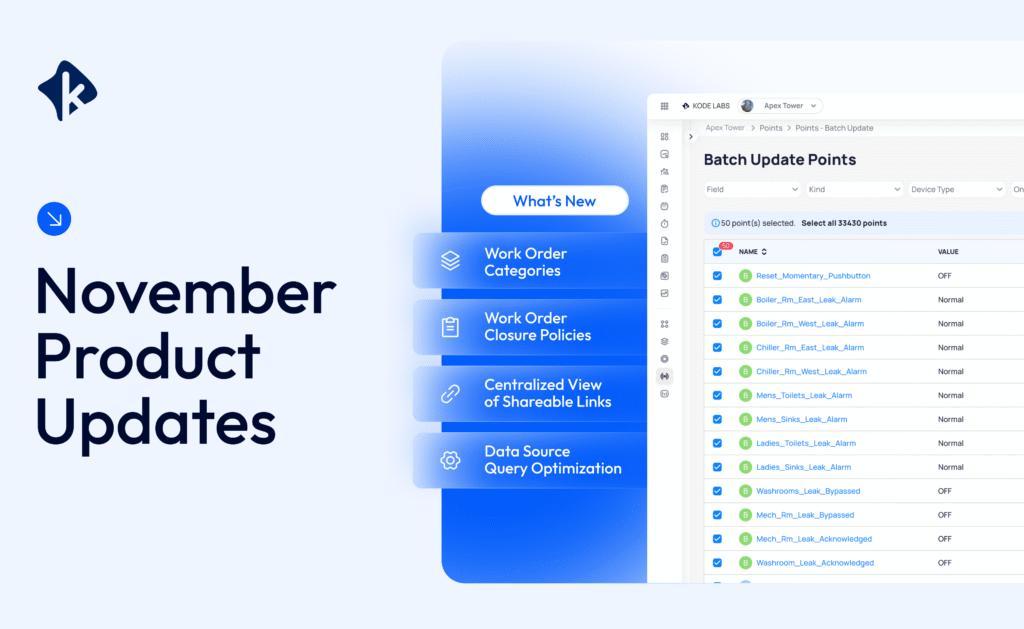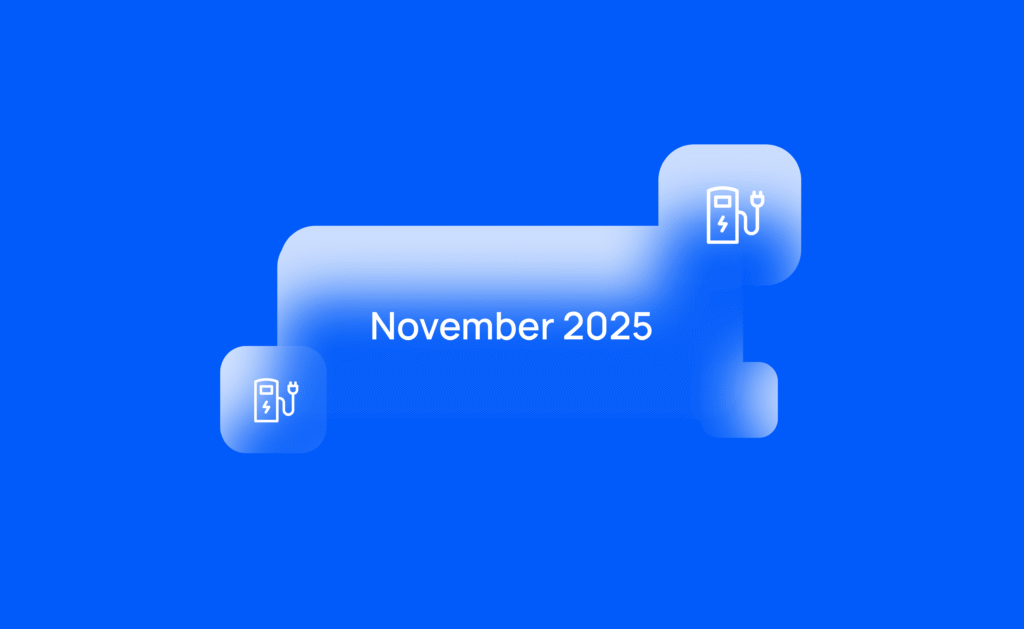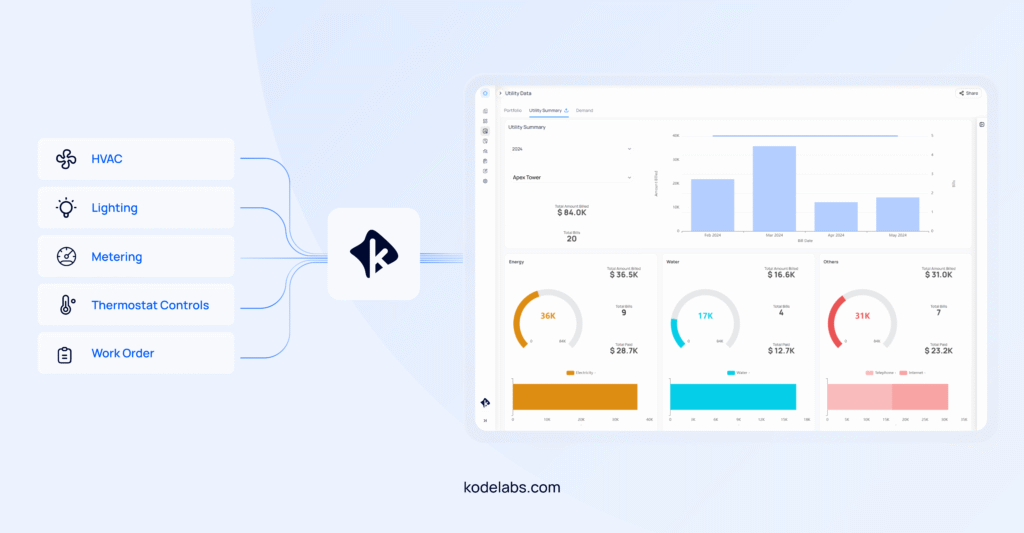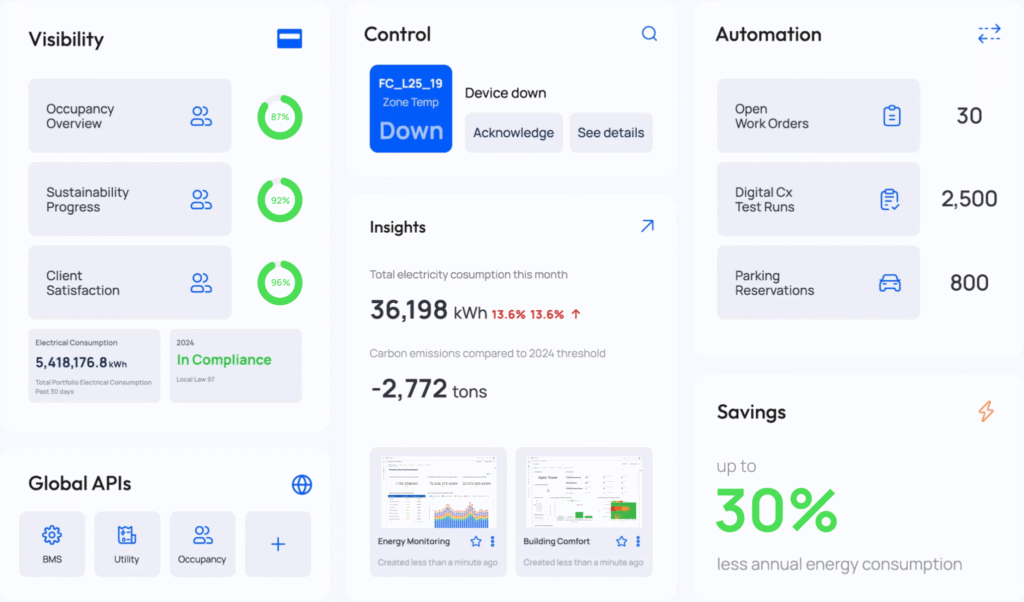On this page
Sign up to our newsletter
Subscribe to receive the latest blog posts to your inbox every week.
By subscribing you agree to with our Privacy Policy.
We rolled out enhancements across AssetOps, Building BI, and Mobile to streamline maintenance, strengthen governance, and deliver faster, more reliable performance for every user.

AssetOps
Teams by Category
What’s new: A new Teams module is now available to simplify and scale how work orders and schedules are assigned across large organizations. Users can create and organize teams (e.g., “HVAC Engineers,” “Plumbing Team”) and assign them directly to schedules and work orders, individually or in bulk.
Why it matters: Teams reduce manual overhead and make assignment workflows far more flexible. Instead of routing work to individuals, managers can assign tasks to entire groups, ensuring the right specialists receive the right jobs automatically. The addition of separate Team and Assignee fields improves notification accuracy, simplifies updates, and enhances workload visibility, leading to cleaner governance and more efficient maintenance operations at scale.
Work Order Categories
What’s new: AssetOps now supports Work Order Categories and Subcategories for Corrective Maintenance and Service Requests. These required fields follow a Portfolio-level taxonomy with the ability to enable, disable, or override at each site. A new Assignment Manager page allows administrators to map subcategories directly to teams or individuals and test routing logic in real time. PM and Inspection work orders remain unaffected to keep those workflows streamlined.
Why it matters: This update brings structure and automation to work order management. Standardized categories improve reporting, accountability, and governance, while automated assignments ensure tasks reach the right team or person faster. Portfolios gain consistency, while sites keep the flexibility they need. The result: cleaner data, better workload distribution, and stronger integration pathways with external CMMS systems.
Work Order Closure Policies
What’s new: A new Closure Policy engine lets administrators enforce Portfolio-wide rules for how Preventive Maintenance, Inspections, and other Work Orders must be completed. Requirements, such as finishing or marking all tasks N/A, logging time, creating follow-ups, or adding notes/attachments for exceptions, can be defined centrally and overridden per site when needed. The system blocks closure until all conditions are met and guides users to resolve any missing pieces.
Why it matters: Stronger closure standards protect data quality and operational consistency. Accurate completion records improve KPIs like plan-vs-actual hours and compliance rates, while also supporting audit readiness and safety. By enforcing good habits and clear documentation, without removing site-level flexibility, organizations strengthen accountability and maintain smoother maintenance workflows across the portfolio.
Building BI
Datasource Column Usage
What’s new: A new Datasource Column Usage tool evaluates how datasource columns are queried and surfaces opportunities to optimize them. It highlights columns used inside widgets that could be refined or rewritten for better performance, giving builders visibility into inefficient query patterns directly from the dashboard.
Why it matters: This feature helps teams improve performance without needing deep technical expertise. By guiding authors toward more efficient datasource usage, dashboards become faster, lighter, and more responsive, reducing load times and improving the overall experience for anyone interacting with data.
Centralized View of Sharable Links & PDF Exports
What’s new: Users can now access a single, centralized interface to view and manage all shared links and scheduled PDF exports across dashboards. This new view makes it straightforward to track, modify, revoke, or audit shared dashboard access, along with monitoring every scheduled report, from one place
Why it matters: Centralized oversight strengthens governance and compliance. Teams gain full visibility into how dashboards are shared inside and outside the organization, reducing risk while ensuring the right people have the right access. It streamlines management, improves accountability, and enhances portfolio-level control.
Datasource Query Optimization & Suggestions
What’s new: Building BI now introduces smarter query handling and optimization assistance. Data sources automatically inherit required filters, widget queries fetch only the needed columns and time ranges, and built-in safeguards, like ClickHouse profile limits, timeouts, and batching, prevent expensive queries from slowing down dashboards. Authors also receive suggestions when queries could be optimized, highlighting inefficient columns, joins, or alternatives that improve performance.

Why it matters: Dashboards load significantly faster and remain more stable at scale. These improvements reduce timeouts, limit backend strain, and ensure predictable resource usage. Builders get clear guidance to refine their queries, while end users enjoy quicker interactions and smoother filtering, resulting in better performance, lower operational risk, and a more satisfying experience across the portfolio.
Mobile
Work Order Categories & Issues Types
What’s new: Work Order Categories and Subcategories are now fully supported on Mobile for Corrective Maintenance and Service Requests. Mobile users can view and select the standardized Portfolio taxonomy, including any site-level overrides. Subcategories also respect Assignment Manager rules, automatically routing work to the right team or individual based on the configured logic. (PM and Inspection workflows remain unchanged.)
Why it matters: Bringing Categories and Issue Types to Mobile makes work order creation faster, clearer, and more consistent in the field. Technicians get structured inputs, managers get cleaner data, and tasks are routed to the right teams without manual intervention. This ensures better reporting, stronger governance, and smoother mobile-driven workflows across the entire portfolio.
Integrations Library
Our integrations library has 1 new APIs and updates to 1 existing APIs. Read about them here.
KODE OS brings building systems, data, and workflows into one place so your teams (and AI) always operate with context—spanning Cloud BMS, Building BI, Digital Maintenance, and more. If you’re new here, explore how these modules work together to deliver measurable outcomes.



